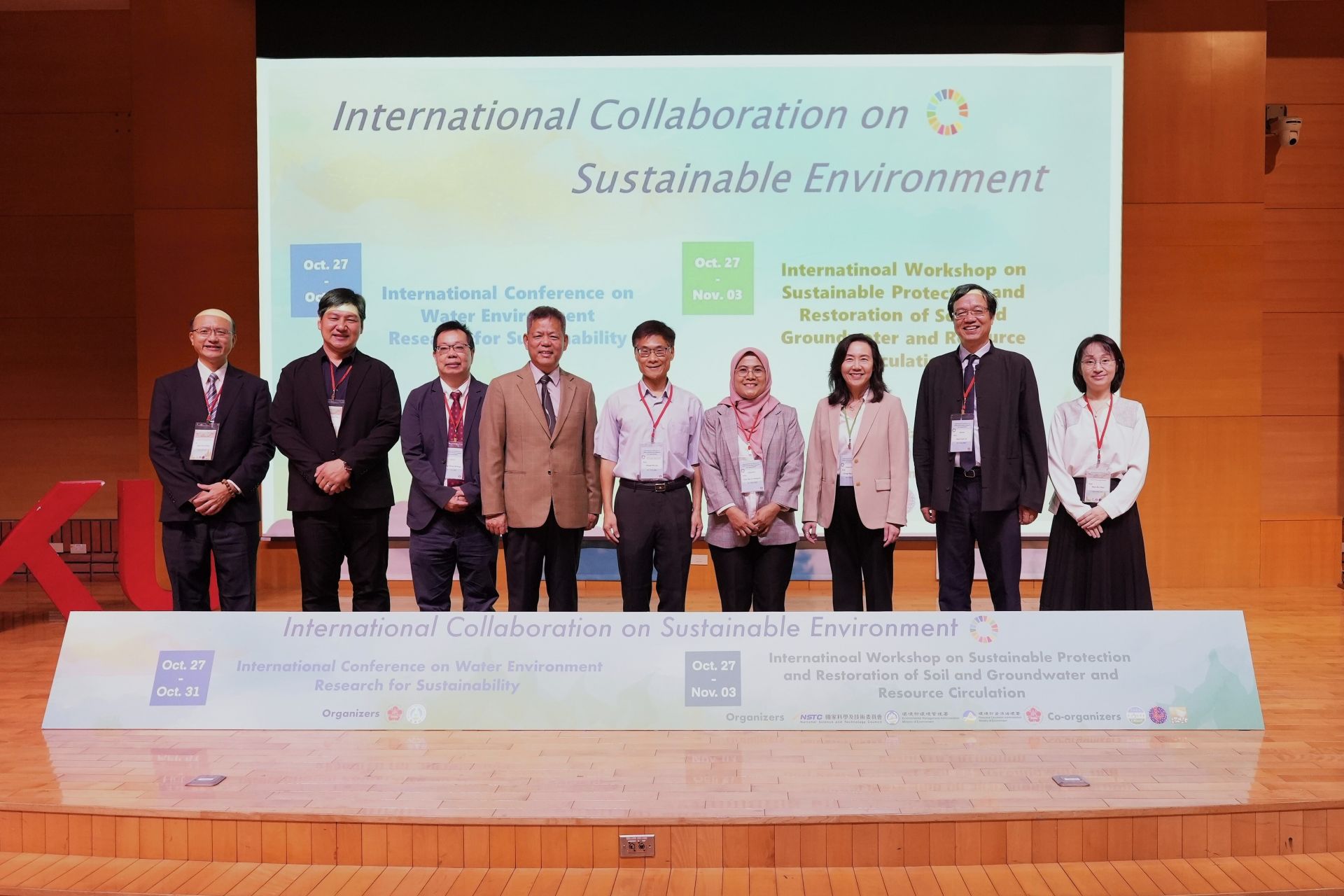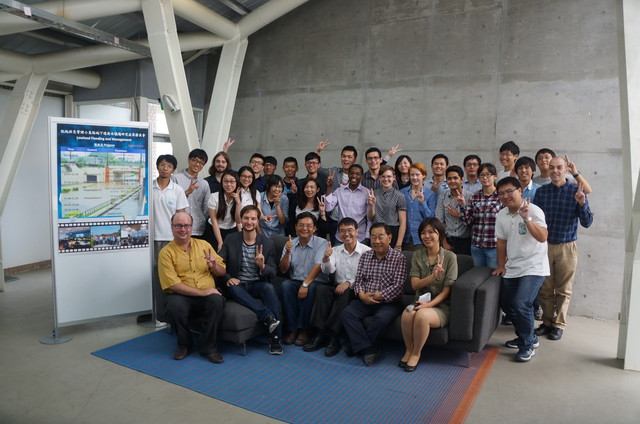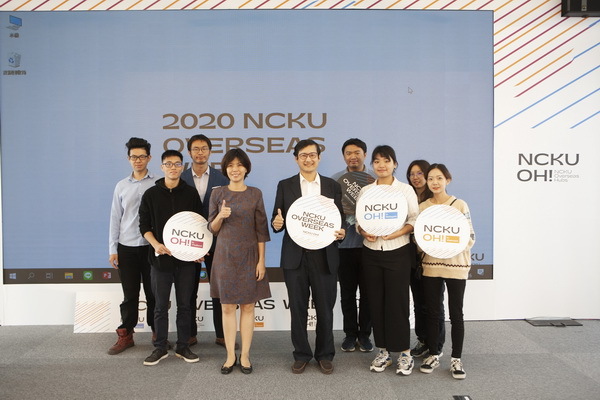SDG6
NCKU Introduces "Smart Water Quality Monitoring and Treatment Vessel" to Restore Clarity to Cheng-Kung Lake.
NCKU professors from the Department of Environmental Engineering and the Department of Systems and Naval Architecture, along with related units, have developed an unmanned vessel with integrated artificial intelligence, water body monitoring, and water quality treatment functions—the "Smart Water Quality Monitoring and Treatment Vessel." After two years of research and development, this vessel, which has been successfully tested in various reservoirs, was introduced to Cheng-Kung Lake on the Kuang-Fu Campus on the 31st. It aims to effectively remove excessive algae, monitor water quality, dissolved oxygen, and address issues like eutrophication.
The launch ceremony for the Smart Water Quality Monitoring and Treatment Vessel took place on the afternoon of the 31st. NCKU Vice President Woei-Jer Chuang presided over the unveiling and inauguration. The event was attended by distinguished guests including Professor Tsair-Fuh Lin from the Department of Environmental Engineering, Dean Sheng-Chih Shen, Director Jian-Hong Wu, Chairman Yu-Lin Han of China Shipbuilding Corporation, and Chairman Hui-Min Liu of Pan Cheng Engineering. The development teams from the Department of Environmental Engineering, Systems Engineering, and the Water Engineering Testing Laboratory were also present to witness the results of this technological development and subsequently conducted a demonstration of the vessel’s operation.
Vice President Chuang emphasized the rapid algae growth and nutrient enrichment in Cheng-Kung Lake and expressed hope that the Smart Water Quality Monitoring and Treatment Vessel would assist in improving water quality. He also looked forward to expanding this research achievement to other water bodies and hoped for more collaboration with China Shipbuilding Corporation and Pan Cheng Engineering.
Chairman Hui-Min Liu of Pan Cheng Engineering noted that, after two years of collaboration, many ideas and goals have been realized, and extensive testing has been completed. He expressed hope for the practical application and commercialization of this technology.
The vessel, developed with support from the National Science and Technology Council, China Shipbuilding Corporation, and Pan Cheng Engineering, was designed and donated by China Shipbuilding. Made of aluminum alloy, it measures 2 meters in length and 1.5 meters in width. The vessel features active water quality monitoring capabilities, providing real-time feedback and addressing water pollution. It can autonomously navigate, monitor water quality, measure depth, sample, aerate, dispense chemicals, or remove algae and debris based on pre-set schedules or real-time data.
Cheng-Kung Lake has faced nutrient enrichment issues in recent years. The Smart Water Quality Monitoring and Treatment Vessel will initially operate intermittently for about a month, with adjustments based on actual conditions. The goal is to effectively remove algae and reduce nutrient levels to improve water quality.
In Taiwan, rivers and reservoirs are crucial water sources and often serve as recreational areas and habitats. The vessel has already been successfully tested in various locations, including the Bird's Beak Pond in Caotun, Yanshui Moonlight Harbor in Tainan, and the NCKU Annan Campus ecological pond, performing tasks such as sampling, depth measurement, dissolved oxygen measurement, and underwater imaging.
The launch ceremony for the Smart Water Quality Monitoring and Treatment Vessel took place on the afternoon of the 31st. NCKU Vice President Woei-Jer Chuang presided over the unveiling and inauguration. The event was attended by distinguished guests including Professor Tsair-Fuh Lin from the Department of Environmental Engineering, Dean Sheng-Chih Shen, Director Jian-Hong Wu, Chairman Yu-Lin Han of China Shipbuilding Corporation, and Chairman Hui-Min Liu of Pan Cheng Engineering. The development teams from the Department of Environmental Engineering, Systems Engineering, and the Water Engineering Testing Laboratory were also present to witness the results of this technological development and subsequently conducted a demonstration of the vessel’s operation.
Vice President Chuang emphasized the rapid algae growth and nutrient enrichment in Cheng-Kung Lake and expressed hope that the Smart Water Quality Monitoring and Treatment Vessel would assist in improving water quality. He also looked forward to expanding this research achievement to other water bodies and hoped for more collaboration with China Shipbuilding Corporation and Pan Cheng Engineering.
Chairman Hui-Min Liu of Pan Cheng Engineering noted that, after two years of collaboration, many ideas and goals have been realized, and extensive testing has been completed. He expressed hope for the practical application and commercialization of this technology.
The vessel, developed with support from the National Science and Technology Council, China Shipbuilding Corporation, and Pan Cheng Engineering, was designed and donated by China Shipbuilding. Made of aluminum alloy, it measures 2 meters in length and 1.5 meters in width. The vessel features active water quality monitoring capabilities, providing real-time feedback and addressing water pollution. It can autonomously navigate, monitor water quality, measure depth, sample, aerate, dispense chemicals, or remove algae and debris based on pre-set schedules or real-time data.
Cheng-Kung Lake has faced nutrient enrichment issues in recent years. The Smart Water Quality Monitoring and Treatment Vessel will initially operate intermittently for about a month, with adjustments based on actual conditions. The goal is to effectively remove algae and reduce nutrient levels to improve water quality.
In Taiwan, rivers and reservoirs are crucial water sources and often serve as recreational areas and habitats. The vessel has already been successfully tested in various locations, including the Bird's Beak Pond in Caotun, Yanshui Moonlight Harbor in Tainan, and the NCKU Annan Campus ecological pond, performing tasks such as sampling, depth measurement, dissolved oxygen measurement, and underwater imaging.
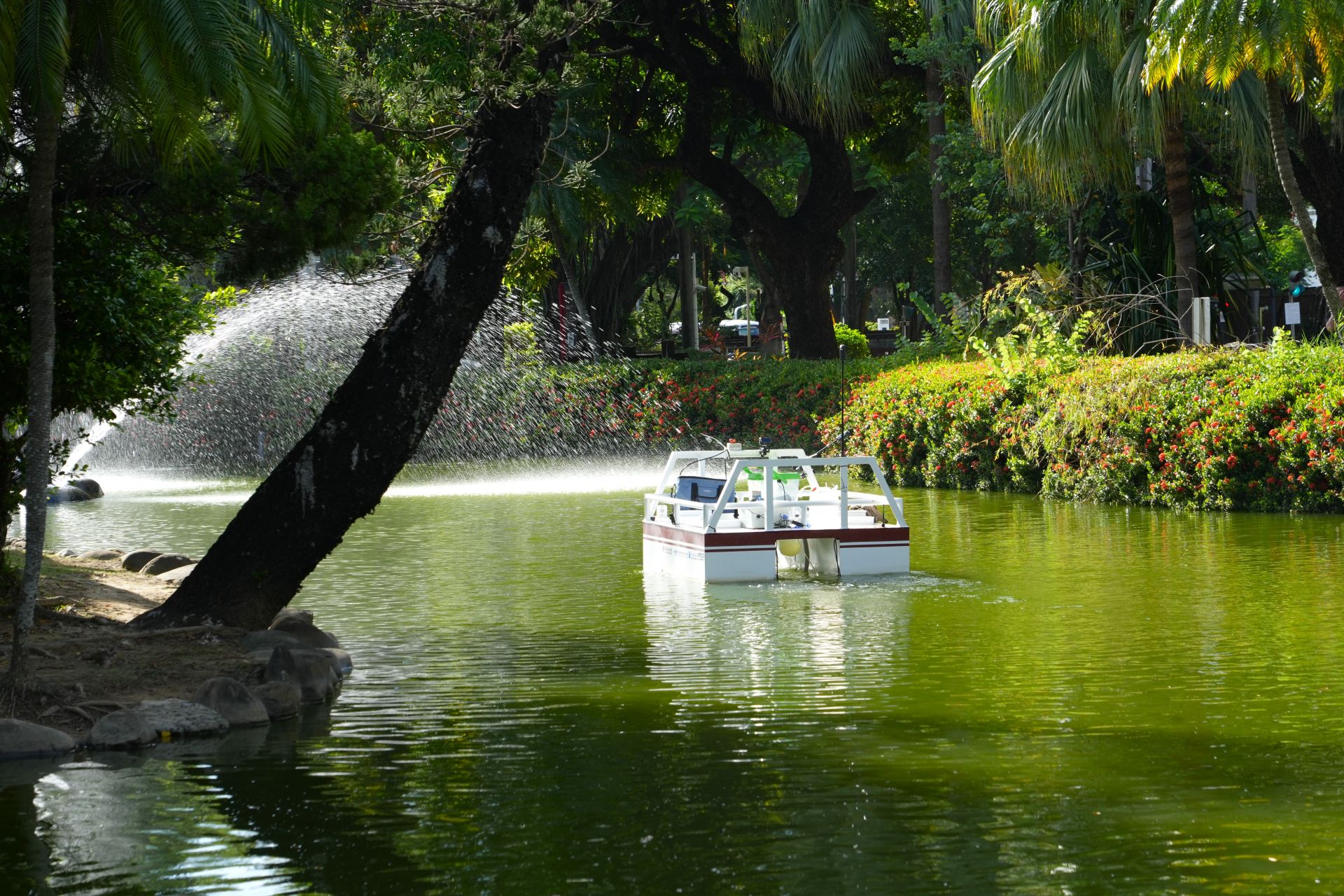
Smart Water Quality Monitoring and Treatment Boat Introduced to Success Lake to Improve Water Quality.
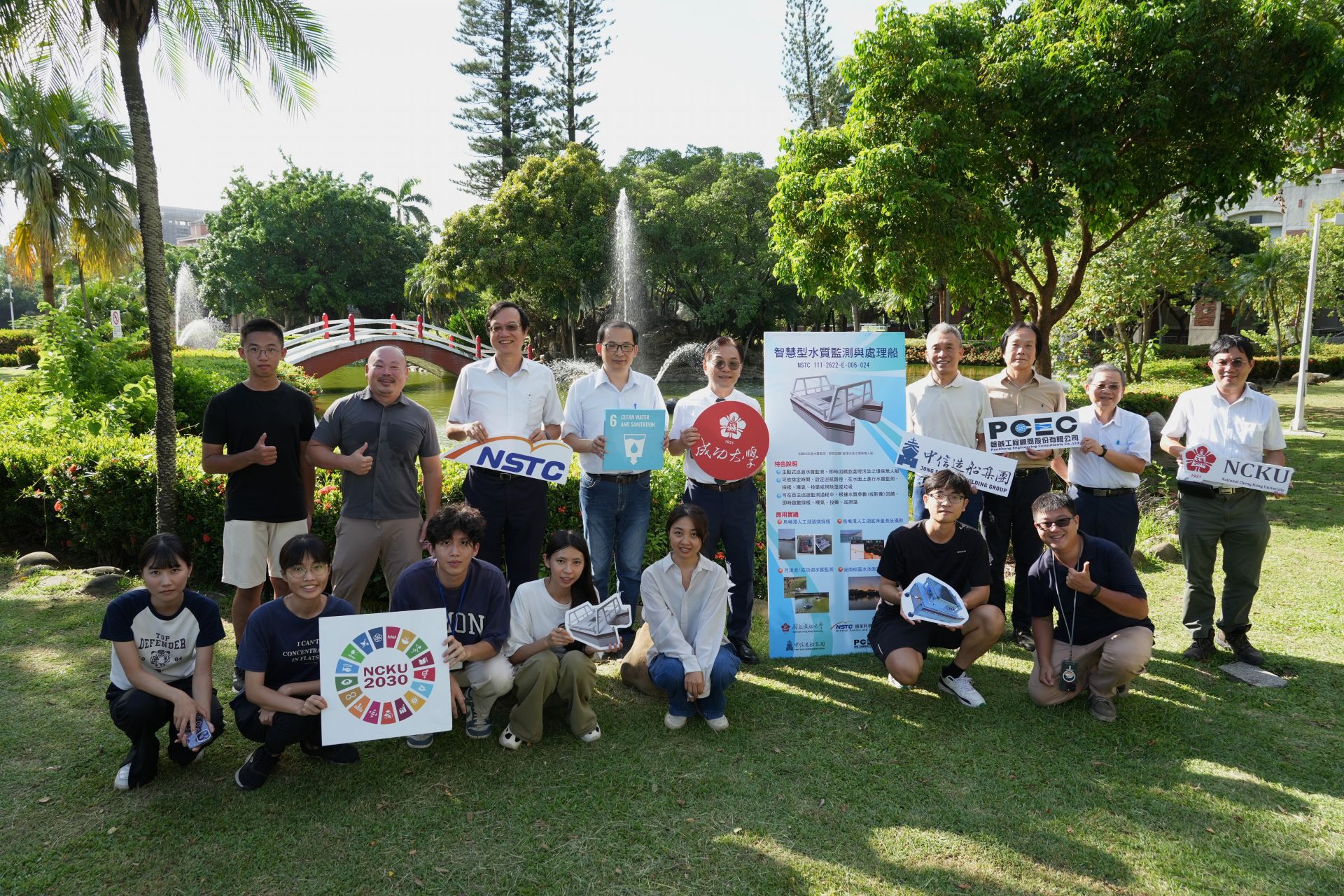
Inauguration Ceremony Group Photo.
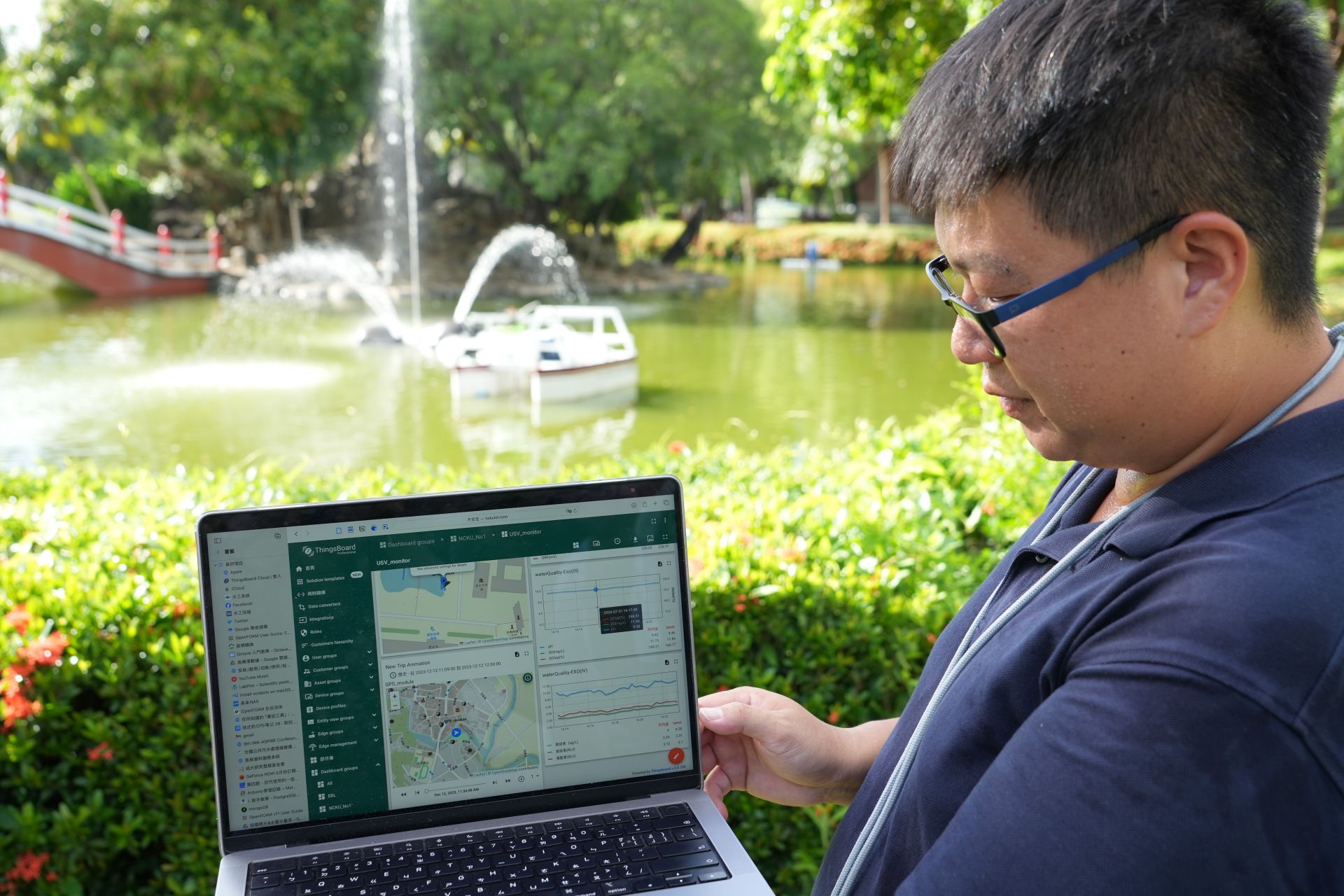
Real-time Feedback Data from the Smart Water Quality Monitoring and Treatment Vessel.






